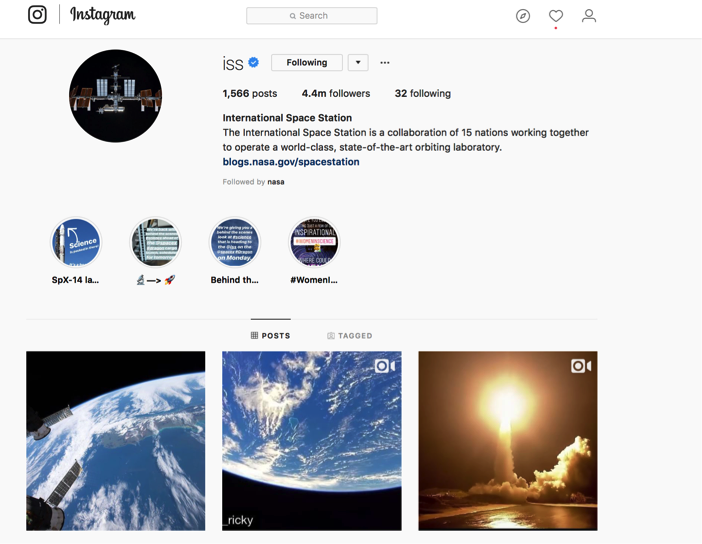Which Social Media Platforms Should Your Business Be On?
Not all social media platforms are the same. In fact, each platform tends to attract a unique mix of users.
Which presents a problem for marketers and business owners. You know you want a presence on social media—but which platform(s) should you choose?
Because you have to pick. You can’t do them all—at least not well—unless you have significant resources behind you. Which is why most small businesses choose to have a presence on only two or three platforms.
So how can you decide? Three factors should go into your decision:
- Your objectives: What are you trying to accomplish by being on the platform? Do you want to generate sales? Create brand awareness? Engage with your audience? Something else?
- Your target audience: Whom are you trying to target? Are there any demographic differentiators such as age, gender, location, etc.?
- Your resources: Do you have the skills and resources you need to generate content for these sites? There’s no point in setting up a YouTube channel if you’re not going to create any videos, for example.
With these three factors in mind, let me give you a quick rundown of some of the most popular platforms.
Facebook (along with YouTube) continues to dominate the social media landscape. It is used by 68% of U.S. adults and has 2.23 billion monthly active users as of June 30, 2018.
With the exception of those 65 and older, Facebook is used by a majority of Americans (i.e. 50+%).
What’s astonishing about Facebook is how frequently it is used. Roughly three-quarters of Facebook users access the platform on a daily basis!
If you have a teenager in your household, you may also know that Facebook is considered a social media platform “for old people.” But even though it lacks the cool factor, 76% of U.S. online youth (ages 12-17) still use the platform.
(Apologies for all the U.S. figures, but it was hard to find equivalent studies for Canada.)
So if you’re looking for a platform with reach and breadth, Facebook might be a good choice.
Twitter had 330 million monthly active users in 2017. Twenty-one percent of American adults use the network.
Twitter is known for its ability to deliver real-time updates. So perhaps it’s not surprising that 80% of usersaccess the platform on their mobile devices.
Unfortunately, Twitter is also known as a repository for mean comments and flame wars, so if you do venture onto the platform, go in with your eyes open.
For marketers, the use of hash tags is an important tool to help others find your content.
Instagram had 35% of U.S. adults as users in 2017. This was an increase of seven points from 2016—indicating a growing user base.
Instagram is built around images. Unlike Twitter or Facebook, where including an image with your post is optional, Instagram requires users to post images (either still or video).
As a result, you can get some stunning visual images in your feed, as you can see from this screenshot of the International Space Station home page:
With its emphasis on images, Instagram is a good site for B2C companies that have good visuals to share.
YouTube
Similarly, YouTube is also built around visuals—but specifically in the form of videos.
It is used by an astounding 73% of U.S. adults and has 91% of the 18-29 age group.
YouTube is a platform for showing your product or service in action, especially if it’s hard to explain or capture in writing.
However, you have to have the resources to create good video content.
Twenty-five percent of U.S. adults are on LinkedIn.
This might seem low compared to Facebook or YouTube, but LinkedIn has the advantage of having a narrower, business-related focus.
Ninety-four percent of B2B marketers use LinkedIn to distribute content. Forty-three percent of marketers say they’ve sourced a customer from LinkedIn.
Certainly, it’s the site that my B2B clients prefer.
In addition, LinkedIn is popular among people in higher-income households. Some 50% of Americans with a college degree use LinkedIn, compared with just 9% of those with a high school diploma or less.
Pinterest is another social media platform worth mentioning because of its unique demographic.
Unlike most platforms that are evenly split between men and women, Pinterest users are 41% women and only 16% men!
If women are your target audience (and if your product or service has visual appeal) then Pinterest may be something you should look at.
Snapchat
Snapchat has 27% of U.S. adults as users. It’s unique in its deep penetration of the youth market. Seventy-eight percent of 18- to 24-year-olds are Snapchat users—compared to 54% among those ages 25 to 29.
So if you’re targeting a younger demographic, Snapchat might be a good option.
Talk to Your Customers!
While these statistics can give you some direction on which platforms to target, it’s always a good idea to ask your existing customers what platforms they’re using.
That feedback (combined with an analysis of your objectives and resources) will guide you to a good decision!


